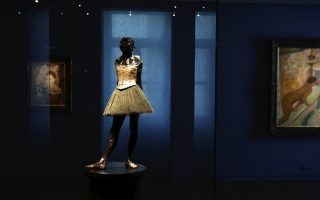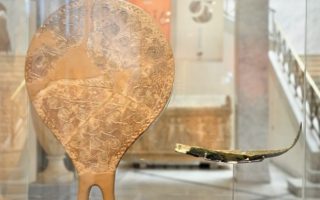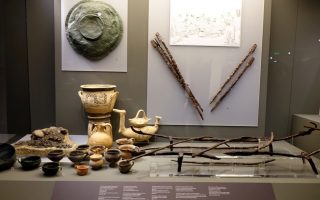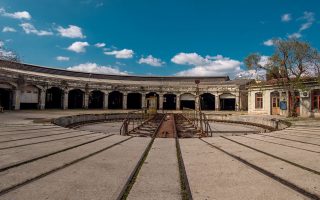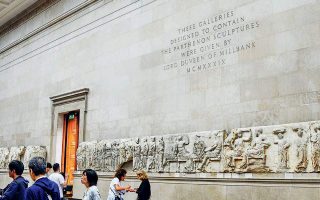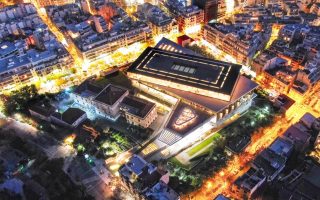Thessaloniki Jewish Museum launches new wing
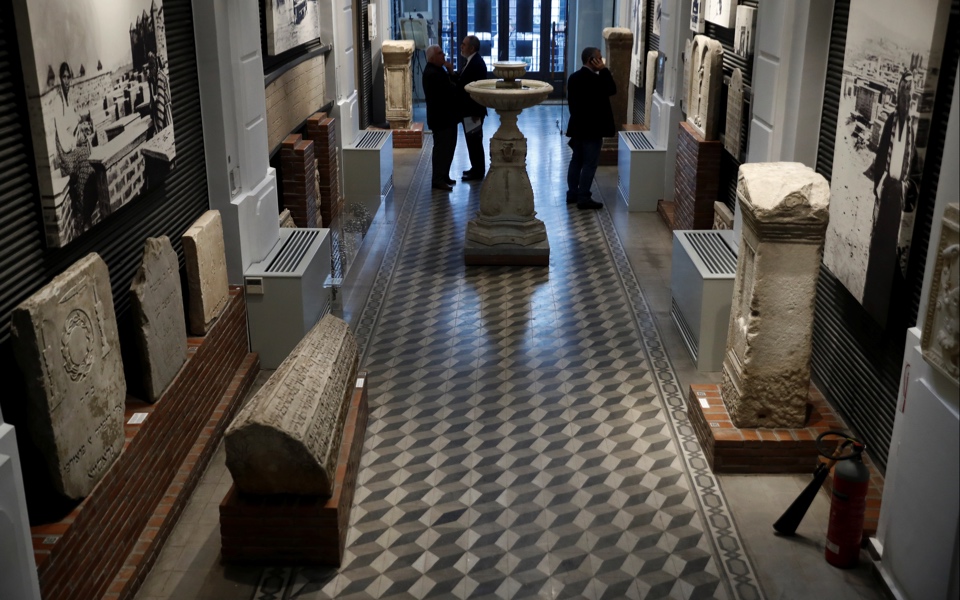
The Jewish Museum of Thessaloniki opened in 2001 with the aim of telling the story and preserving the memory of the northern port city’s Jews with exhibits including heirlooms and testaments to their presence. On the occasion of the recent inauguration of its new wing, curator Evangelos Hekimoglu talks about the museum and the changes that the new wing represents.
How is the museum connected to its location?
It is in the commercial portico of Cedid Han on Agiou Mina Street, which is the northernmost end of the Tophane Jewish quarter. In the 120 years up to the 1990s, the area hosted a succession of different commercial activities, from a fish market, printing houses, newspaper offices and banks to clothing manufacturers and merchants, along with an enduring Jewish presence. The businesses moved to other parts of the city after the 1980s and the area declined. The museum, together with the library of the National Bank of Greece Cultural Foundation and the recent pedestrianization of Agiou Mina have been instrumental in breathing life back into the area.
How was the transformation of the buildings in the arcade for the museum’s new wing carried out without them losing their sense of history?
The two buildings that make up the portico were constructed between 1880 and 1910. The architectural approach to the restoration of these old buildings was carried out with a great deal of respect by KARD Architects, in cooperation with Dr Ilias Messinas. The two buildings – the big townhouse and the new wing – were connected on the outside with two arches spanning the facade, while damaged elements on the inside were replaced with new ones, but using the same materials. Several structural elements have been retained that are not necessarily associated with the museum itself, but reference the uses and history of the portico, such as the stores’ old shutters.
What can visitors expect to see now with the addition of the new wing?
The new wing has added four new spaces, one on each level. The first is the museum shop and the second focuses on Jewish architectural activity in the interwar years. The other two new halls pertain to the 1912-45 period, which is the most important, as it covers the gradual attrition and final destruction of the Jewish community, but also efforts at its revival. The narrative comes to an end with a collection of folk art and the section on the destroyed cemetery and the synagogues. Furthermore, there is an area in the basement that has been designed to host lectures and educational and other activities.
The old Jewish cemetery was destroyed in 1942-43 on the orders of a Greek commander. What have the reactions to that decision been?
The conditions under which the decision to loot and destroy the Jewish cemetery was taken and carried out remain unclear. Several people were responsible, Greeks as well as Germans. What is certain is that the decision was in violation of the Greek law on abandoned cemeteries and of the special law for this cemetery. We mustn’t forget, though, that the area was ultimately ceded to the University of Thessaloniki under a free Greek government, in 1946. What is most important, however, is that this issue is unknown to the overwhelming majority of Thessaloniki residents, as is the history of the city’s occupation more generally.
The museum also provides insight into the Sephardic community. Are there political connotations to the museum’s narrative?
The museum’s historical exhibitions are political. Anti-Semitism has a very clear identity and it is often not the one we think it is, unless we study the sources. It is a political behavior that is determined by specific social circumstances, which needs to be pointed out. This characteristic is evident in our temporary exhibitions as well, such as the one on “Unsmiling Brides,” which showed photographs from weddings after the Holocaust.
How does the museum create a connection between the people of Israel today and the pre-war Jewish community of Thessaloniki?
Jewish communities are extremely varied. Thessaloniki was an Ottoman city in which the Jews constituted the dominant community in terms of population for four centuries. This is why the museum, with its exhibitions and online programs, is of such interest to all Jews, but also to anyone who wants to learn more about Thessaloniki’s Ottoman past.
Are there differences between this and other Jewish museums?
Thessaloniki was the only city in Europe with such a comparatively large Jewish population. In contrast to that great historical presence, the Jewish Museum of Thessaloniki’s greatest disadvantage is that its duty is to preserve the memory of a community that was all but wiped out by Greece’s German conquerors. The 4 percent that survived returned to demolished neighborhoods, bombed synagogues and libraries, pillaged heirlooms, shops and homes.
The number of visitors to Thessaloniki from Israel has increased significantly in recent years. Why is that?
The main reason is that Turkey is no longer a desirable destination for most Israelis. The void has been covered by Thessaloniki, where tens – if not hundreds – of thousands of Jews from all over the world have roots. We must remember that from 1913 to 1940, almost half of Thessaloniki’s Jewish population emigrated and settled in Israel, France and the United States. Thessaloniki was the cradle of all those who carried the Sephardic tradition. An important role has also been played by the municipality’s policy to promote tourism in this direction and even more so by the diplomatic rapprochement between Greece and Israel.
Can the museum serve as a magnet for tourism and if so, which tourists?
We have seen a significant increase in individual visitors – as opposed to groups – which tells us that the JMT can indeed attract the interest of tourists. After all, for any Jew, regardless of where they come from, the museum is a reason to visit Thessaloniki. This is why we make sure we have a varied exhibition program and also that we continue conducting research so that we can always have new things to present. However, the JMT’s exhibits are not only interesting to Jews. The Jewish community was not alone in the city and many of the exhibits refer to its interaction with other communities. As far as visitor trends are concerned, Israelis come here during the holiday periods, Greek come mainly in the winter and other tourists visit year round. Around 15 percent of the museum’s visitors are school pupils and university students.
Jewish Museum of Thessaloniki, 11 Agiou Mina, tel 2310.250,406, jmth.gr. Open daily except Saturday.
This article first appeared in Taxidia, Kathimerini’s travel supplement.
